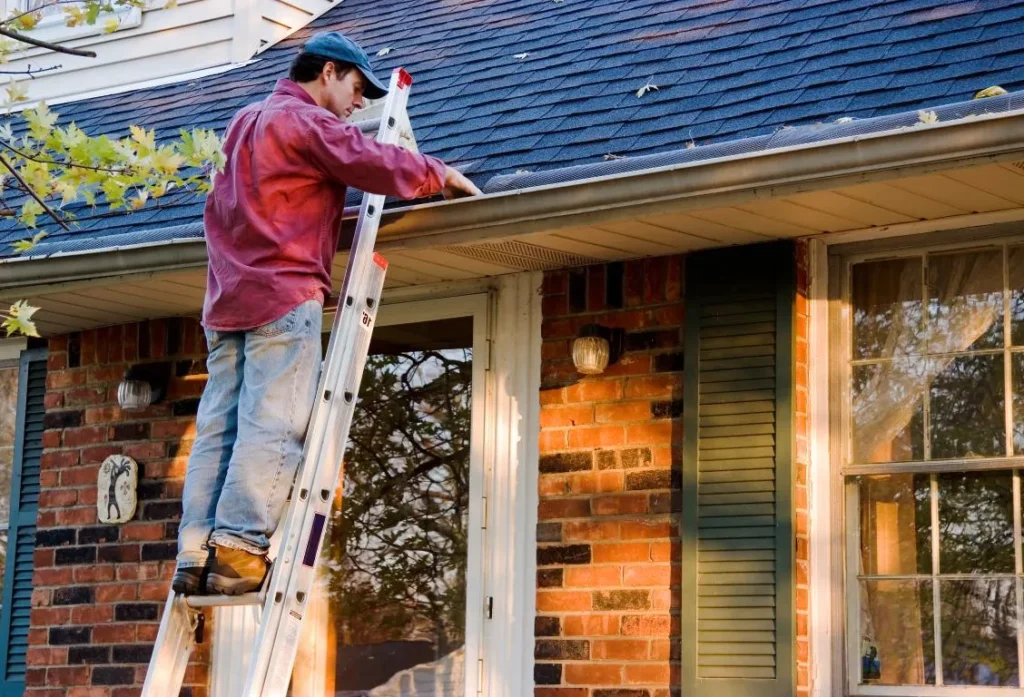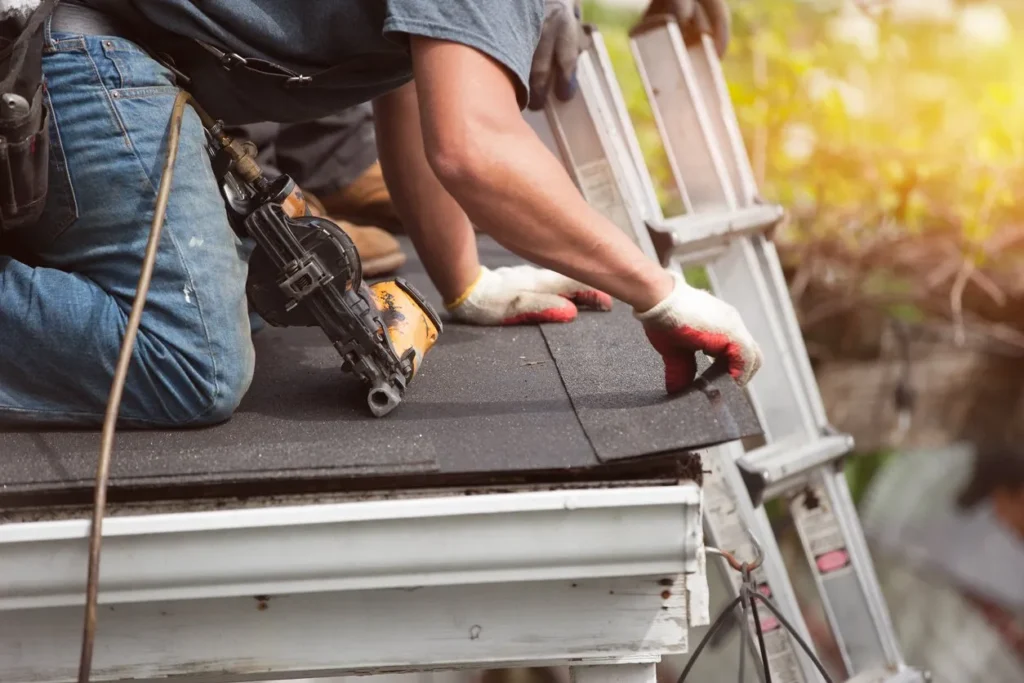Do you want to know the essential home maintenance tips to protect your investment? Here you are going to learn the essential home maintenance tips to protect your investment.

Your home is more than just a place to live, it’s one of your most valuable financial assets. Without proper care, small issues can turn into costly problems, and your investment could quickly lose value.
That’s why following essential home maintenance tips to protect your investment is crucial for every homeowner. By staying proactive and consistent, you can prevent damage, increase your home’s lifespan, and preserve its resale value.
If you’re a new homeowner or a seasoned property owner, these practical tips will help you maintain your home efficiently and avoid unnecessary expenses.
Essential Home Maintenance Tips to Protect Your Investment

Here are top 10 essential home maintenance tips to protect your investment:
1. Inspect and Clean Gutters Regularly
Clogged gutters are one of the most common causes of water damage in homes. Leaves, dirt, and debris can block proper water flow, causing rainwater to overflow and damage your roof, siding, and foundation. Make it a routine to clean your gutters at least twice a year, preferably in the spring and fall.
During cleaning, check for any cracks or holes in the gutters and ensure that downspouts are clear and draining properly. Consider installing gutter guards to reduce buildup and save time. Also, make sure the water from the downspouts flows at least three feet away from your home’s foundation.
Overflowing gutters can also lead to basement flooding or foundation cracking, which are costly repairs. Regular inspection and maintenance of your gutters not only protect your home’s structure but also preserve its overall appearance. This simple task is one of the easiest ways to protect your property investment year-round.
2. Check the Roof for Damage
Your roof serves as the first line of defense against the elements. Over time, exposure to harsh weather conditions can cause shingles to loosen, tiles to crack, or flashing to deteriorate.
Conduct a visual inspection at least once a year, especially after major storms. Look for missing or curled shingles, moss growth, sagging areas, or dark spots that may indicate water damage. If your roof is more than 15 years old, consider having it inspected by a professional annually.
Early detection of small issues can prevent leaks that lead to mold, insulation damage, and costly interior repairs. Clean any debris such as leaves or branches that accumulate on the rooftop to avoid water pooling. Investing in preventative roof maintenance can significantly extend its lifespan and preserve the integrity of your home.
A well-maintained roof not only protects your investment but also boosts curb appeal and improves energy efficiency throughout the seasons.
3. Seal Windows and Doors
Drafty windows and doors can drive up your energy bills and reduce indoor comfort. Over time, weatherstripping and caulking wear down, allowing air and moisture to seep inside.
Inspect the seals around all doors and windows at least once a year. Check for gaps, cracks, or brittle materials. Reapply caulk where needed and replace weatherstripping if it appears worn or damaged. Pay close attention to older wooden frames, which can warp or shrink with age and moisture exposure.
Properly sealing windows and doors enhances insulation, keeping warm air in during winter and cool air in during summer. This small maintenance task reduces your home’s heating and cooling costs while preventing moisture from entering and causing mold or wood rot.
Not only will this protect your investment structurally, but it also improves energy efficiency and overall comfort. Well-sealed doors and windows are essential for long-term protection and lower utility expenses.
4. Service Your HVAC System
Your HVAC (Heating, Ventilation, and Air Conditioning) system is vital to maintaining a comfortable home year-round. Like any major appliance, it requires routine maintenance to function efficiently.
Replace or clean air filters every one to three months depending on usage and household factors like pets or allergies. Clogged filters make the system work harder, increasing energy use and wearing down components faster. Schedule professional HVAC inspections and servicing at least twice a year, once in spring for cooling and once in fall for heating.
Technicians will clean the coils, check refrigerant levels, and inspect the system for wear or potential problems. Regular servicing not only extends the lifespan of the unit but also ensures better indoor air quality.
A well-maintained HVAC system reduces the risk of unexpected breakdowns and keeps your energy bills manageable. By staying on top of HVAC maintenance, you protect your investment and ensure year-round home comfort.
5. Test Smoke and Carbon Monoxide Detectors
Smoke and carbon monoxide detectors are essential for home safety. They can save lives in emergencies, but only if they’re working properly. Test each detector in your home once a month by pressing the “test” button.
If you don’t hear a loud beep, replace the batteries immediately. Experts recommend replacing batteries twice a year, an easy reminder is to do it when you change your clocks for daylight savings. Additionally, clean the units regularly with a soft cloth or vacuum to prevent dust buildup, which can interfere with sensors.
Replace the entire detector every 7 to 10 years, even if it appears to be functioning. Don’t forget to install detectors near bedrooms and on each level of your home. Keeping your smoke and carbon monoxide detectors in top shape helps protect your family from fire and gas hazards. It’s a simple but crucial step in preserving your home and your peace of mind.
6. Drain and Flush Your Water Heater
Your water heater works hard year-round, supplying warm water for showers, laundry, and dishes. Over time, sediment builds up inside the tank, especially in areas with hard water. This build up reduces efficiency, shortens the unit’s lifespan, and increases energy bills. To keep your water heater running smoothly, drain and flush the tank at least once a year.
Start by turning off the power supply or gas and allowing the water to cool. Connect a hose to the drain valve, then flush the tank until the water runs clear. This removes sediment and prevents corrosion inside the tank.
While you’re at it, inspect the pressure relief valve and thermostat settings. If the tank shows signs of rust or leaking, consider replacing it. Annual maintenance extends the life of your heater and ensures reliable hot water when you need it most. This simple task protects your plumbing system and your overall home investment.
7. Maintain Exterior Paint and Siding
Your home’s exterior is constantly exposed to the elements, sun, rain, wind, and debris. Over time, paint begins to peel, and siding can crack or warp, especially in extreme climates.
These issues don’t just affect curb appeal; they allow moisture to seep in and damage your home’s structure. Inspect your exterior walls annually. Look for signs of fading, blistering paint, mildew, or soft spots on siding. Repainting every 5 –10 years, depending on the material and climate, helps seal and protect surfaces.
Power wash the exterior annually to remove dirt and grime that can break down finishes. Pay extra attention to wooden areas, which are more prone to rot and pests. Maintaining your home’s paint and siding is an investment in both aesthetics and structural integrity.
A well-kept exterior increases property value, reduces long-term repair costs, and keeps your home looking fresh and inviting year after year.
8. Clean Dryer Vents
Dryer vents are often overlooked but can become a serious fire hazard if not maintained. Lint buildup reduces airflow, forces your dryer to work harder, and significantly increases the risk of a fire.
Clean the lint trap after every load, this is your first line of defense. At least once a year, clean the entire dryer vent system. Disconnect the dryer, vacuum the exhaust hose, and clear the vent opening on the outside of your house. If the vent run is long or hard to access, consider hiring a professional.
You’ll also notice improved dryer performance, shorter drying times, and lower energy use. This small maintenance task enhances appliance efficiency and keeps your home safe. It’s a low-cost action that can prevent high-cost damage.
Protecting your investment means thinking beyond visible areas, and a clean dryer vent is an often-missed but vital part of the equation.
9. Inspect Plumbing for Leaks
Even a small leak can lead to major damage if ignored. Water stains, mold, and increased utility bills are often signs of hidden leaks. Make it a habit to inspect under sinks, behind appliances, and around toilets and tubs.
Look for puddles, discoloration, or musty odors. Touch pipes to check for condensation or leaks. Replace worn washers, corroded pipes, or dripping faucets promptly. Also, monitor your water bill, an unexplained increase may indicate a hidden leak in the system.
Insulate exposed pipes during colder months to prevent freezing and bursting. If you’re unsure about the source of a leak, contact a licensed plumber for an inspection. Staying proactive with plumbing checks can save you thousands in potential water damage.
It also preserves your home’s structure, prevents mold growth, and ensures clean, safe water. Regular plumbing maintenance is key to protecting your property investment and avoiding preventable disasters.
10. Keep Your Landscaping in Check
Landscaping does more than beautify your property, it also plays a role in your home’s safety and structure. Overgrown trees, shrubs, and vines can damage siding, rooflines, and even the foundation. Trim trees regularly to keep branches from touching your roof or windows.
Prune shrubs to maintain airflow and sunlight near walls, which helps prevent moisture and mold issues. Ensure plants are not too close to the house, especially those with deep roots that could interfere with plumbing or foundation. Clean up leaves, sticks, and other debris to avoid clogging drains and gutters. Mulch garden beds properly to retain moisture and suppress weeds.
Additionally, check for signs of pests, like termites or rodents, which often start their invasion from the yard. Well-maintained landscaping doesn’t just add beauty; it acts as a barrier against structural damage. Protecting your investment means caring for both the inside and outside of your home.
Related Post:




